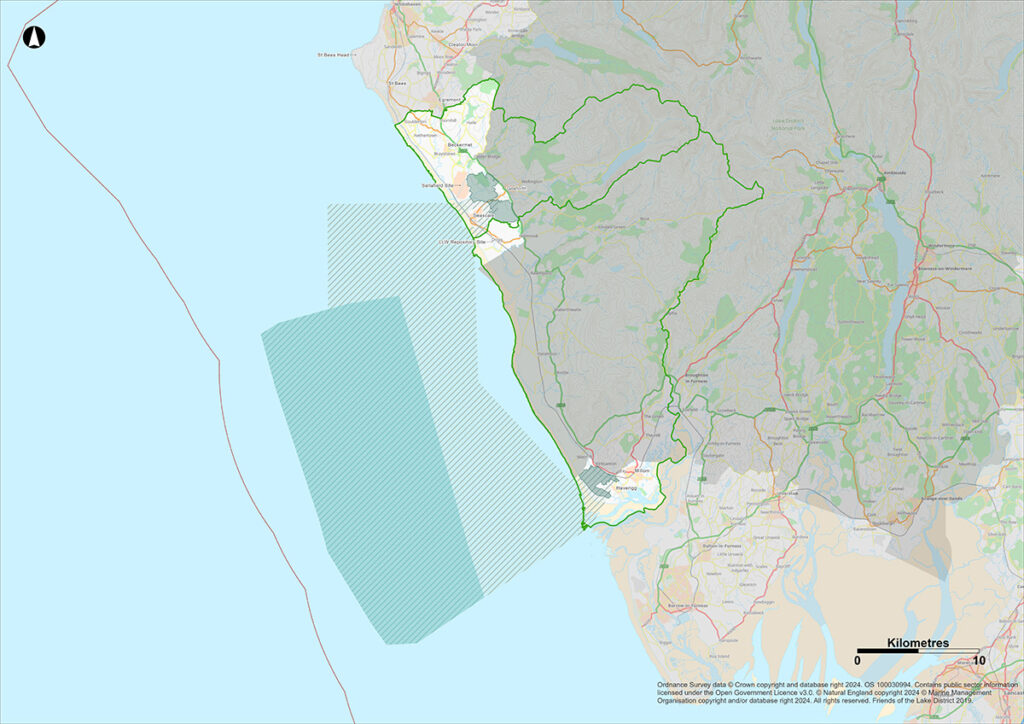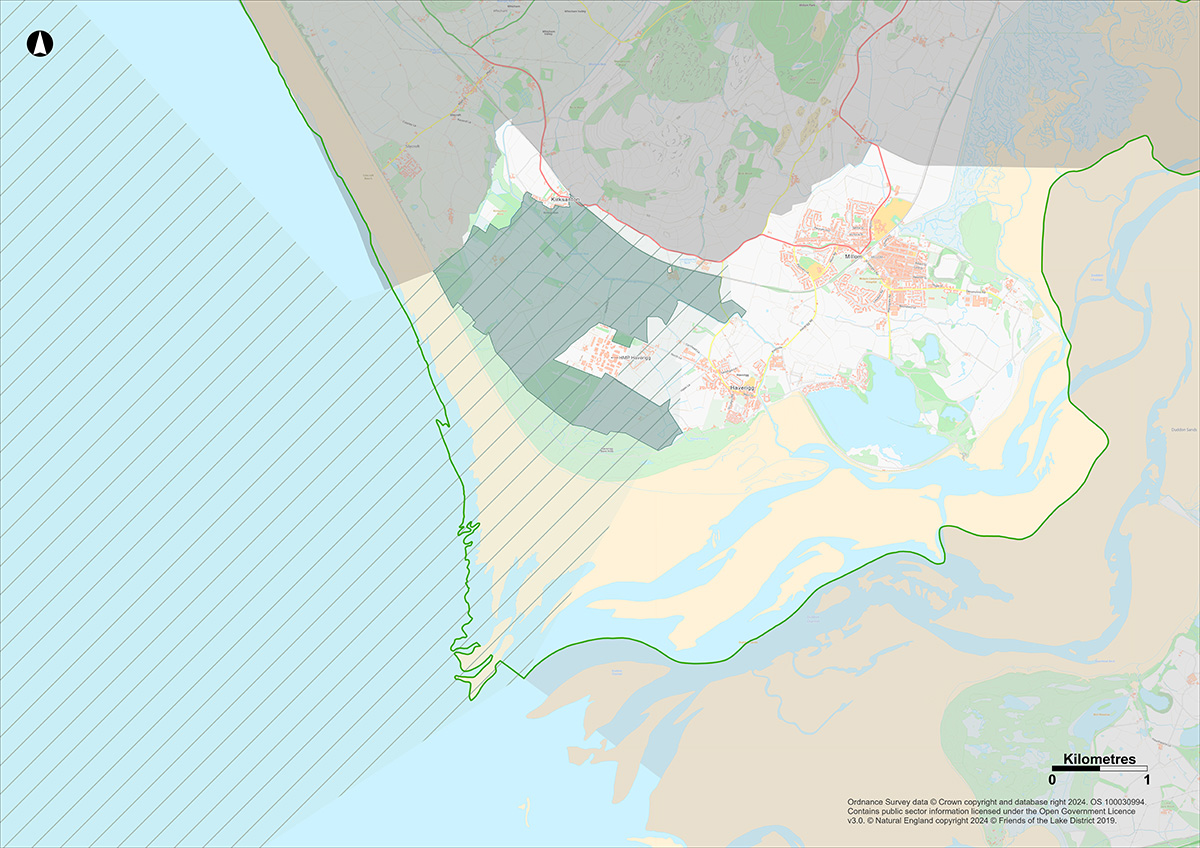Areas of Focus in South Copeland
From Search Areas to Areas of Focus
An important part of the journey towards a Geological Disposal Facility (GDF) is identifying potentially suitable sites.
Nuclear Waste Services (NWS) is currently gathering information to understand if the current Search Areas, in Mid Copeland and South Copeland in Cumbria and Theddlethorpe, in Lincolnshire, could be suitable to host a GDF.
A Search Area is the geographical area on land made up of one or more electoral wards, where NWS is considering potential sites.
How we identified Areas of Focus in the South Copeland Search Area
The original Search Area established by the Copeland GDF Working Group and taken forward by the South Copeland GDF Community Partnership included ‘Millom’ and ‘Black Combe & Scafell’ electoral wards. The Lake District National Park and proposed extension were excluded from consideration.
The Working Group also agreed that the focus for the sub-surface part of a GDF, where the waste would be disposed of, would be the deep geology beneath the inshore area, up to 22km beyond the coast of the Search Area.
Following the Local Government Reorganisation in 2023, Copeland Borough Council ceased to exist, becoming part of the new Cumberland Council unitary authority, and the ward boundaries were revised. To reflect that, the Search Area boundary also changed, and now covers the ‘Millom’ and ‘Millom Without’ electoral wards.
Our early work, which is available in the Initial Evaluation Report and subsequent Search Area Evaluation Report, confirmed the potential suitability of this Search Area and inshore area to host a GDF. These reports are available on the Community Partnership website.
NWS applied its methodology for identifying Areas of Focus to define the Sub-surface, Surface and Accessway Areas of Focus within the South Copeland Search Area. The methodology includes looking at a range of factors, such as geological characteristics, protected areas, environmental constraints and community considerations.
Sub-surface Area of Focus
Alongside the National Geological Screening data, in South Copeland, NWS looked at legacy 2D and 3D seismic data, and 3D seismic survey data collected by NWS in August 2022. This indicates that there may be a volume of rock with suitable geological characteristics to develop a GDF which could be accessed from a surface site. Further studies will continue to develop our understanding of this sub-surface area as a potential host geology.
The Sub-surface Area of Focus is approximately 300km2. The full area would not be needed, yet at this early stage, looking at a larger volume of rock gives NWS flexibility in the design and location of the underground vaults and tunnels. This Sub-surface Area of Focus is the same for both South Copeland and Mid Copeland Search Areas.

If you are unable to access any of the maps on this page, please attend one of our in-person events or contact the NWS helpdesk.
Surface Area of Focus
Through the application of the Areas of Focus methodology, a number of potentially suitable and less constrained areas were identified in the South Copeland Search Area. Further consideration of this area, that took into account NWS’ Siting Factors, as well as community and programme considerations, resulted in the identification of a Surface Area of Focus at the Land West of Haverigg, which NWS will prioritise and consider further at this time.
Land West of Haverigg
This Surface Area of Focus is to the west of Haverigg, between the Lake District National Park (LDNP) and the coast. This land is approximately 3.5km2. The area is bounded by the LDNP and Cumbrian Coast Railway Line to the north and east, and the coastline in the west and south. Whilst maintaining the feasibility of the Surface Area of Focus, we have sought to minimise the number of included residential properties.
A buffer of approximately 500 metres has been applied from the urban areas of Millom and Haverigg. Kirksanton has also not been included in the Surface Area of Focus. Other considerations mean that HMP Haverigg, Kirksanton Moss Nature Reserve and the Duddon Estuary Site of Special Scientific Interest are not included within the Area of Focus.

Accessway Area of Focus
Applying the Areas of Focus methodology, we have identified a potential accessway within which the connection tunnels could be constructed joining the Sub-surface Area of Focus to the Surface Area of Focus. This is significantly wider than will be required to allow for flexibility; it is currently estimated the final accessway will be between 250-500m wide. For the onshore part of the accessway, we have sought to avoid passing directly beneath Haverigg and HMP Haverigg.
Other areas NWS considered in the Search Area
One other area was looked at; however, NWS is not prioritising it at this stage for the following reasons:
Land Northeast of LLW Repository
This area is approximately 3.5km2 and is to the northeast of the LLW Repository site. The LLW Repository is the only national repository of its type and its continued operation is fundamental to supporting the UK nuclear estate. NWS considers that an Area of Focus so close to the LLW Repository site could potentially impact ongoing operation of the site.
Areas of Focus webinars
We held a series of events and webinars in early 2025 to talk with communities in more detail about Areas of Focus. You can watch the webinar recordings below.
Common themes discussed at events included information about a suitable site and a willing community, Test of Public Support, Site Evaluation and Property Value Protection scheme. If you have any questions, please contact us.
